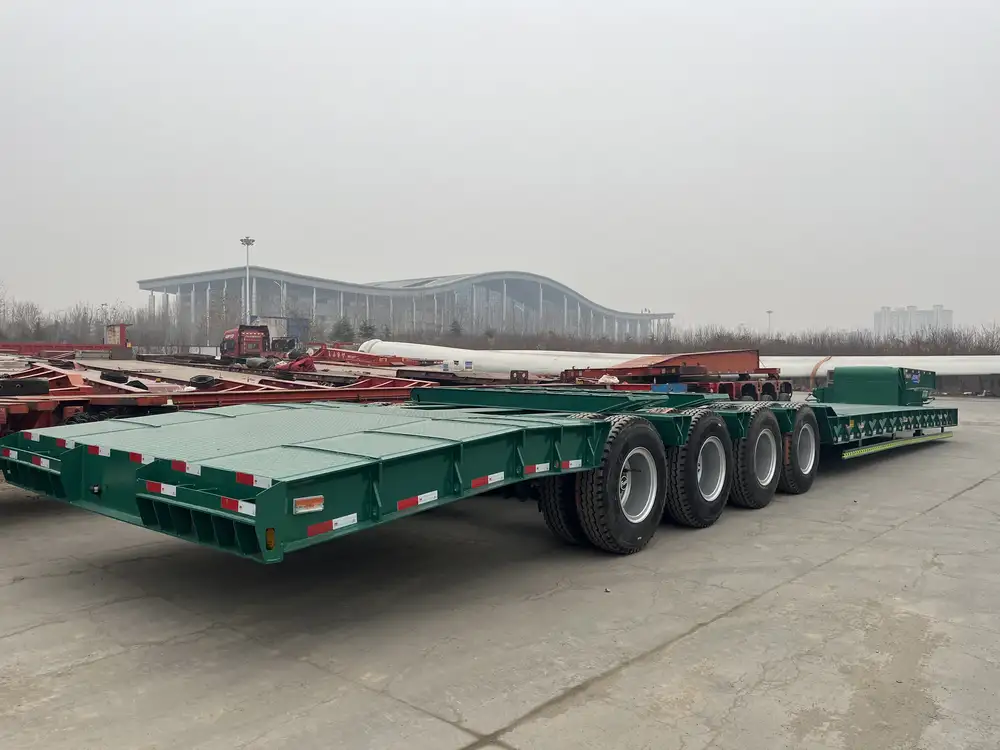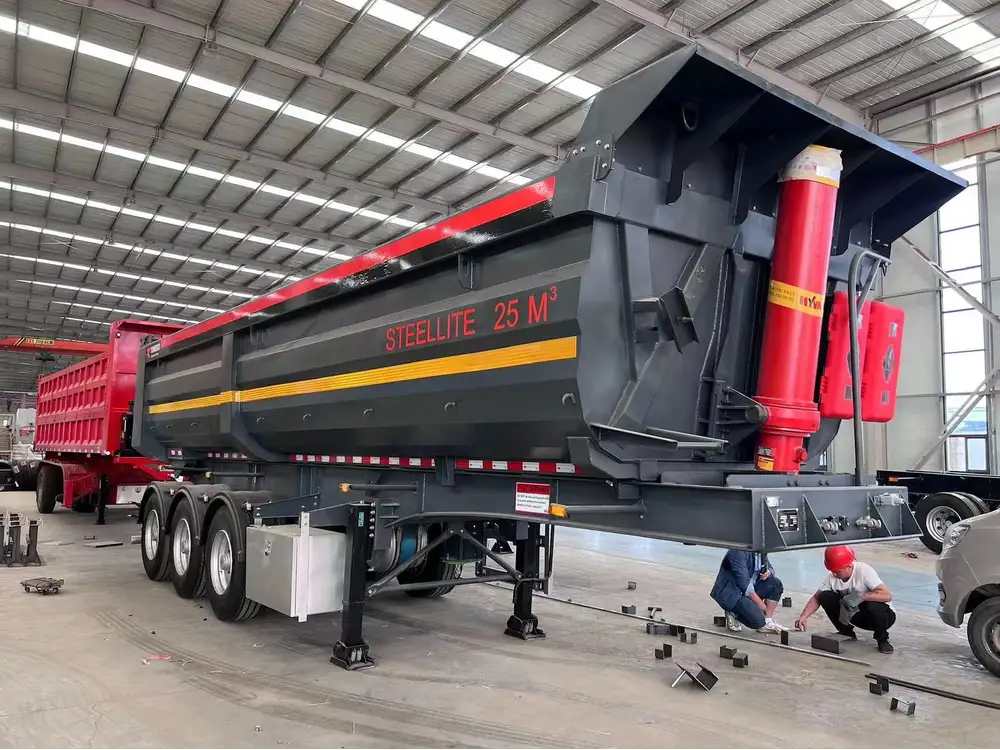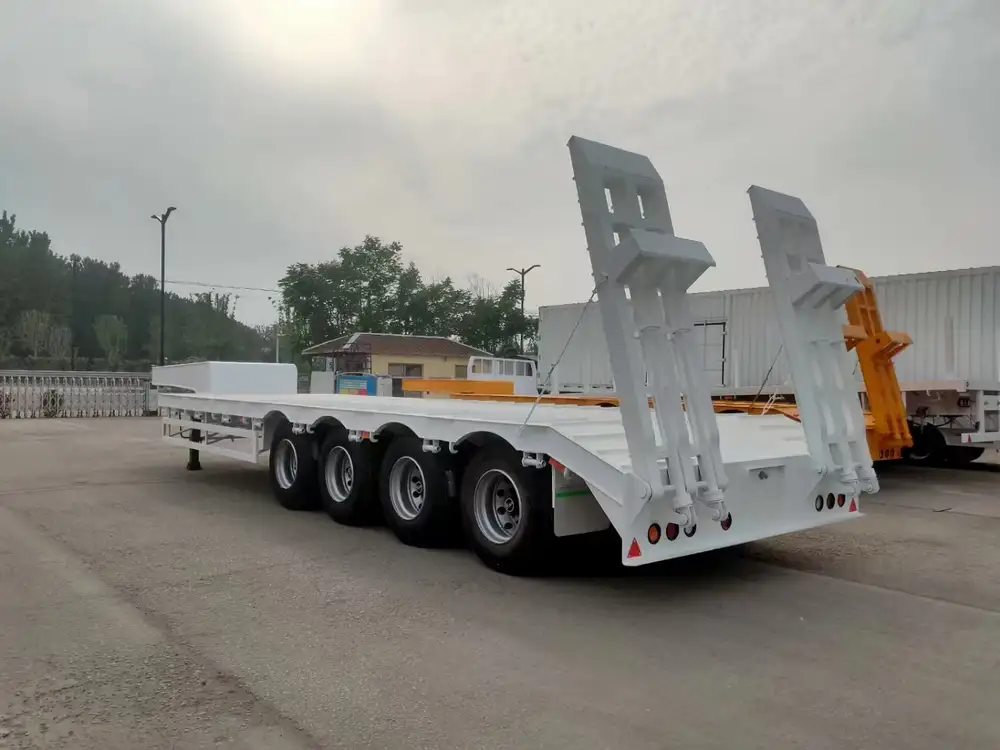Transporting cargo securely is not just a regulatory necessity but also a vital responsibility for any manufacturer or hauler. Properly placing tie downs on a flatbed trailer ensures that your load arrives at its destination safely, reducing the risk of damage and accidents. In this comprehensive guide, we will explore the most effective methods for securing cargo using tie downs, while also addressing common user concerns and providing helpful insights into best practices.
Understanding the Importance of Proper Tie Down Use
Using tie downs on a flatbed trailer effectively is crucial for several reasons:
- Safety: Inadequately secured loads can lead to catastrophic accidents on the road, affecting not only the transporting vehicle but also other road users.
- Cargo Protection: Proper tie downs prevent movement that can result in wear, damage, or loss of cargo.
- Legal Compliance: Regulations mandate the secure transport of cargo. Understanding and implementing best practices is essential in meeting these legal requirements.
- Efficiency: A well-secured load optimizes space, allowing for the maximum utilization of the trailer.
Types of Tie Downs Commonly Used
Before diving into the specifics of how to place tie downs, it’s essential to understand the different types available:
| Type | Description | Best Use Cases |
|---|---|---|
| Ratchet Straps | Heavy-duty straps with a ratchet mechanism for tensioning. | Ideal for securing heavy, bulky items. |
| Cam Buckle Straps | Straps that use a cam buckle for tensioning without a ratchet. | Great for lighter loads. |
| Chain Tie Downs | Steel chains with hooks for heavy-duty applications. | Used for securing large, heavy machinery. |
| Webbing Slings | Wide fabric straps designed to lift and secure loads. | Useful for delicate cargo needing a gentle touch. |

Prepping the Trailer and Load
1. Inspecting the Flatbed Trailer
Before placing your tie downs, ensure that the flatbed trailer is in optimal condition:
- Check for Damage: Inspect the trailer for any structural defects.
- Verify Tie Down Points: Ensure anchoring points are intact, capable of withstanding the load’s weight and movement.
2. Understanding Load Characteristics
Assess the load’s size, shape, and weight. This information is critical for:
- Selecting the right type and number of tie downs.
- Distributing weight evenly to prevent tipping.

How to Properly Place Tie Downs on a Flat Flatbed Trailer
Step-by-Step Process
Here’s a structured guide on how to effectively place tie downs on your flatbed trailer:
Step 1: Position the Load
Ensure Proper Load Placement: Center your load on the trailer, aligning it with the trailer’s axles to maintain balance.

Step 2: Choose the Right Tie Downs
Select Tie Downs According to Your Load:
- Heavy loads require ratchet straps or chains.
- Lighter loads can be secured with cam buckle straps.
Step 3: Attach Tie Down Straps
- Identify Anchor Points: Utilize the pre-installed D-rings, stake pockets, or tie-down tracks on your trailer.
- Connect the Strap:
- For ratchet straps, thread the strap through the ratchet mechanism, pull it through the anchor point, and re-thread it back into the ratchet.
- Tighten: Use the ratchet to pull the strap tight, checking for slack and ensuring a secure grip around the load.
Diagram of Proper Tie Downs Placement:
+-------------------------------------------------+
| FLATBED TRAILER |
| Anchor Point _____________ Anchor Point |
| | | |
| Load ------> | | <------ Load |
| | | |
+-------------------------------------------------+Step 4: Cross the Straps
For Enhanced Stability: Cross the straps over the load whenever possible. This technique creates an X pattern, significantly increases load stability, and prevents the load from shifting during transport.

Step 5: Securing the Load
- Wrap and Secure: Ensure the straps wrap effectively around the load. For oddly shaped items, additional straps might be necessary for full coverage.
- Check the Tension: After securing, check each strap to ensure it is taut and stable.
Step 6: Inspect and Adjust
Final Inspection: Perform a meticulous inspection before hitting the road. Adjust straps as necessary to eliminate any slack and ensure stability.
Special Considerations

Load-Securing Units
Depending on cargo type, consider using specialized load-securing units, including:
- Edge Protectors: These protect straps from wear when used on sharp edges.
- Rubber Cushions: Used for loads requiring a non-slip surface.
Weight Distribution
Distributing weight evenly across the trailer enhances stability. Utilize the 60/40 rule: place 60% of the load toward the front, ensuring equilibrium.
Environmental Factors
Consider environmental conditions that may affect your load:
- Wind: Secure loose items and consider using additional tie downs in windy conditions.
- Weather: Wet or icy conditions may require extra vigilance for securing loads.

Common Mistakes to Avoid
Lack of Securement: Failing to secure the load or using inadequate straps can lead to accidents.
Underestimating Load Movement: Always assume some movement may occur, and gear accordingly.
Ignoring Regulations: Familiarize yourself with local and state regulations governing load securement to avoid potential fines.
Best Practices for Maintaining Tie Downs
Routine maintenance extends the life of your tie downs and ensures their efficacy:
| Maintenance Task | Frequency | Purpose |
|---|---|---|
| Inspect for Damage | Before each use | Ensure functionality and safety. |
| Clean After Use | After transporting | Preventing dirt and debris buildup extends longevity. |
| Store Properly | After use | Keeping tie downs organized prevents damage/storage issues. |
Conclusion
Placing tie downs effectively on a flatbed trailer is not merely a best practice; it is a core responsibility of safe transport. By thoroughly understanding the types of tie downs available, adhering to proper securing procedures, and avoiding common mistakes, individuals can significantly mitigate risks associated with transporting cargo.
With careful attention to detail—from selecting the right tie downs to ensuring proper load placement and securing techniques—manufacturers and haulers can ensure safe transport and compliance with regulations. Always keep safety as the top priority, and continually educate on evolving best practices to further enhance transport efficacy and security.
By integrating these insights and methodologies into your transport processes, you can elevate your operation’s safety standards, protect your cargo investment, and ensure peace of mind on the road.



